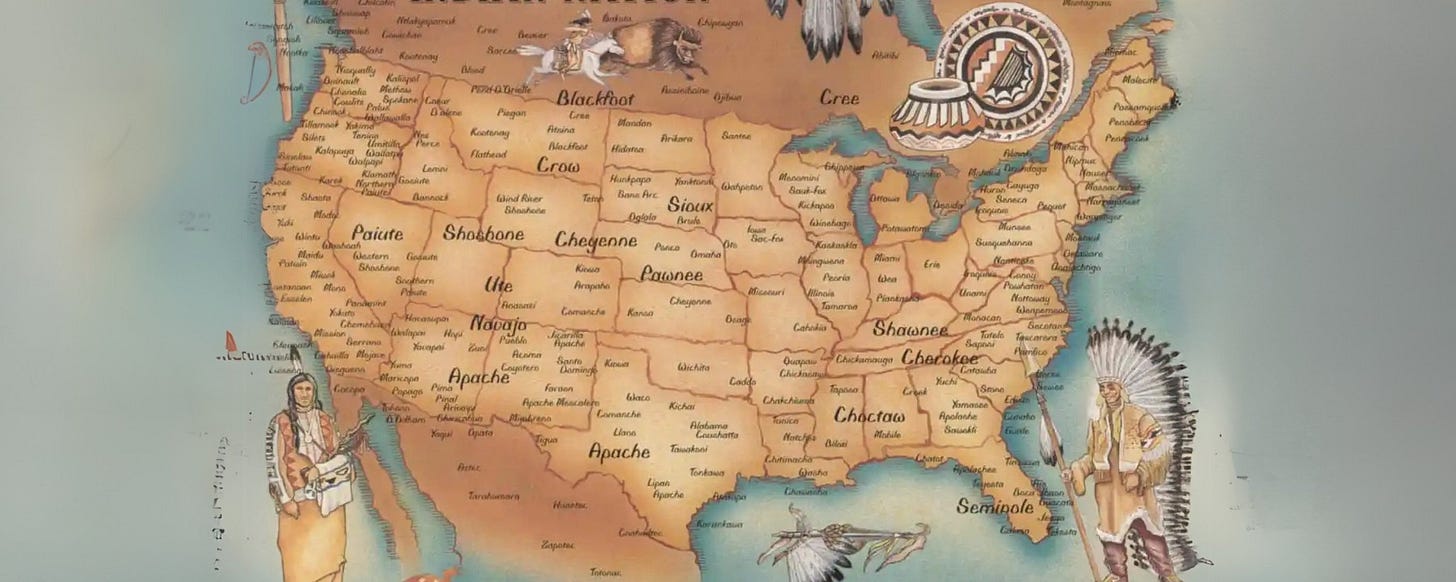The slogan is simple, the sentiment sweeping: "No one is illegal on stolen land." It festoons placards, hashtags, and classroom walls from Sacramento to Santa Cruz. But as with most slogans meant to end debate, this one also seeks to preclude history. It presumes that California was once peaceful, indivisible, and unjustly snatched from its rightful stewards. But history, and a robust respect for indigenous agency, tells a far more complex story, one in which conquest, conflict, diplomacy, and trade all played a part. To claim that the land was "stolen" and never rightfully acquired is not only historically inaccurate, it infantilizes the very indigenous groups it purports to defend.
California, contrary to modern myth, was never a harmonious Eden of united tribes singing songs of peace until the Spanish came ashore. The truth is that for over 12,000 years, more than 500 tribal societies occupied the region, often in brutal competition. These tribes warred incessantly over territory, trade routes, slaves, and honor. The Haida and Tlingit, although northern, share cultural practices that echoed throughout the West: the capture of slaves, the killing of rivals, the assimilation or extermination of the weak. Entire tribes were wiped from existence. Lands changed hands not once but dozens of times, often through bloodshed.
By the time Spanish missionaries arrived in the late 1700s, the number of distinct tribes had already plummeted. Epidemic disease, internecine warfare, and resource exhaustion had reduced the original 500-plus tribal entities to fewer than 100. This attrition wasn’t the result of colonial intervention but of indigenous struggle itself. The myth of the peaceful native collapses under the weight of archeological and ethnographic evidence. Tribal societies in California, like in the East, exhibited the full spectrum of human behavior: noble and cruel, artistic and violent.
Spain held California for 52 years. Mexico claimed it next, for a meager 27. Neither power treated the land as eternally sacred tribal territory. Nor did any surviving tribal leaders challenge their sovereignty in the language of permanent stewardship. When the United States acquired California in 1848 as part of the Treaty of Guadalupe Hidalgo, it did so not by force but by payment: $15 million in cash and $3.25 million in assumed debt. This was not theft, it was a transaction recognized under international law.
The real moment of moral scrutiny came not with the acquisition, but with the American decision to negotiate directly with the tribes. Between 1851 and 1852, the US signed 18 treaties with the remaining major tribal entities, including the Luiseño, Cahuilla, Serrano, and Diegueño. These tribes voluntarily ceded vast territories in exchange for designated reservation lands, livestock, food, and goods. The Treaty with the Dieguino, for instance, exchanged lands for 1,800 head of beef cattle, blankets, and clothing. Critics call these treaties unjust, but if one argues the tribes were too weak or simple to make such agreements, one strips them of their dignity, their rationality, and their sovereignty.
Were these treaties honored? Some were, some weren’t. The US Senate, bowing to political pressure kept them secret for years. But despite this reality, almost all tribes retained occupancy on designated lands. By the mid-20th century, the federal government attempted to correct these injustices through the Rancheria Act of 1958, which granted property rights to approximately 3,000 California Indians, roughly 15 percent of the state’s indigenous population. These lands were not merely symbolic. They were tangible assets, capable of development, sale, and economic growth.
Today, over 30 California Rancherias operate gaming enterprises on those lands, with revenues surpassing $8 billion annually. The Morongo and San Manuel Bands have built thriving casino resorts, contributing to tribal self-sufficiency and local economies alike. These outcomes are not the fruits of a theft left unremedied but of a dynamic and evolving relationship between tribes and the federal government, one in which rights, property, and recognition have been negotiated over time.
To call California "stolen land" is to deny this history of tribal warfare, to erase the diplomatic agency of native leaders, and to ignore the billions in modern tribal wealth generated from what was once federally distributed land. Far from being a colonial crime scene frozen in amber, California has been a palimpsest of competing sovereignties for millennia. If the passage of land from one sovereign to another is theft, then history itself is a long litany of larceny, one in which every people is both victim and victor, conqueror and conquered.
But perhaps the most insidious error in the "stolen land" narrative is its condescension. It suggests that native peoples were mere pawns, helpless against the cunning of European diplomats or the guns of American soldiers. It denies them the ability to strike bargains, to fight when necessary, and to accept peace when wise. The tribes of California were many things, but they were not children. They were shrewd, adaptable, and as politically calculating as any European power.
In fact, by the time of the US acquisition, only 18 tribal entities held land of any strategic consequence. These were not distant memory-keepers of a vanished culture, they were its stewards, and they chose to parley. They chose to survive. Many have since thrived.
Land changes hands. It always has. And in California it has done so by spear and by signature, by warpath and by wagon. To insist that one particular moment in that sequence constitutes a unique and unforgivable theft is not historical analysis, it is theater. It turns an intricate history of violence, commerce, diplomacy, and adaptation into a morality play in which one side is forever villain, the other forever victim.
This is not only false. It is unjust.
If you enjoy my work, please consider subscribing https://x.com/amuse.






As usual an informative, well written article sharing truth with those who seek it. Thank you! 😊
Slogan factories, focus groups and psychologists all to instill guilt. All to manipulate the public sowing racial strife. Always the desire to control.